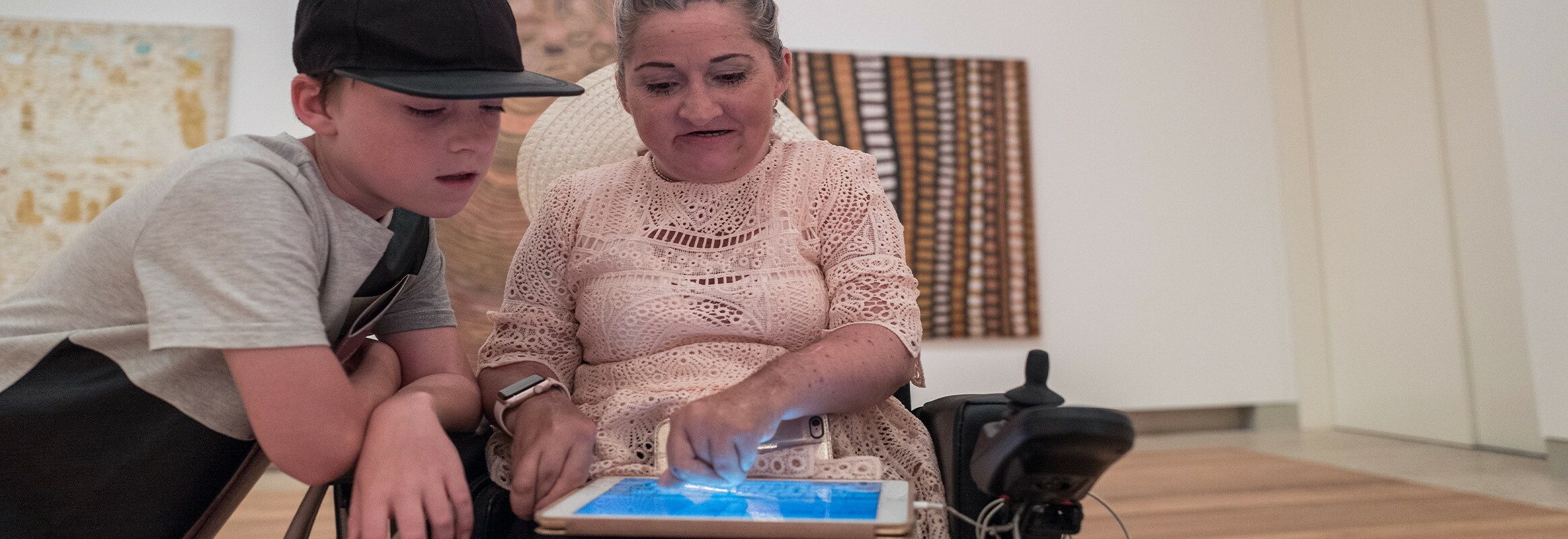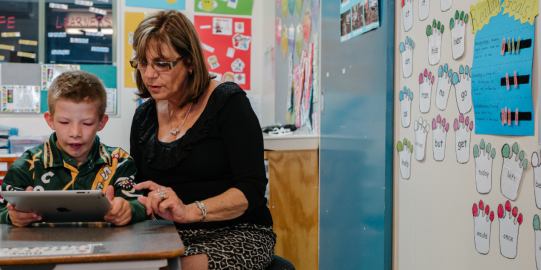Daily conversations are highly interactive. They move very quickly over a range of topics. Conversations are so fast-paced that the only way we manage is to start planning our message while the other person is still talking. We predict what they will likely say, so we can prepare our response. We use non-verbal cues such as pauses, tone, eye gaze, intonation, and even breath, to predict our timing and add meaning to our messages.
For people who use Augmentative and Alternative Communication (AAC), starting and maintaining a regular conversation can be a challenge. Not only because of speed and timing, but also because of the limitations of communication device technology.
Conversational barriers for AAC users
AAC users have to balance demands of conversation while retrieving words manually on a communication device.
Some examples of how non-verbal cues and timing affect conversations for AAC users include:
- Adding nonverbal cues can be out of time with the AAC message. They can even interrupt or disrupt the process of writing the message.
- AAC users have to break eye contact to start generating their message.
- When a speaking person begins planning their message, it is invisible to the person who is still talking. But if an AAC user starts generating their message at that same point, it could appear impolite.
- AAC users often need to focus on their AAC, not to their communication partner.
- Typing words, using text to speech, or selecting symbols is slower than retrieving speech, so AAC users have time pressures to compose their message.
Seven ways to support AAC users in conversations
All seven tips below come down to these important lessons: ask AAC users how they want to be supported. Work with them to find the best ways to encourage and support their contribution to conversations.
1. Be patient
Expect to take more time when having a conversation with an AAC user. Be patient: pause, wait and allow time for the AAC user to compose a message. Slowing the pace reduces some of the demands. It also improves understanding. Stop predicting what the other person is likely saying and listen to what they actually say. Wait for the completed message so you don't miss important words.
2. Conversation looks different
Expect that an AAC user cannot simultaneously provide the typical nonverbal cues while also using their device. The electronic voice will not provide the same cues.
3. Don't underestimate
Research suggests that conversation partners might underestimate AAC users due to the limitations of AAC systems. Speaking people interpret a slow pace, long pauses, broken eye contact, a blunt response, and missing nonverbal cues as poor communication skills. We need to understand these as the result of imperfect technology, not of a lack of skills or intelligence.
4. Invite the AAC user to set the topic
AAC users often respond to conversations, but research shows they rarely set the topic. Pause and be patient so they can start the conversation. Consider asking the AAC user if they have photos of what they are talking about. While you explore the visuals, the AAC user can compose their message.
5. Advocate for the AAC user
Ask others in the conversation to wait while the AAC user composes their message. Ask the AAC user how they can be best supported to contribute to the conversation, or if they want to continue a conversation online (e.g., via social media or email). Virtual conversations usually have fewer barriers because both people are using technology rather than speech.
6. Plan ahead
AAC users need time to compose their responses but also have some quick messages pre-stored ready to use when appropriate. Most AAC systems allow the user to plan phrases for different situations and conversations, then pre-store them and quickly retrieve them. Research suggests that many AAC users do not use all of these features. Experienced AAC users and mentors can share strategies.
7. Visual supports
Some AAC users, with speech impediments and disorders such as aphasia, struggle to retrieve words. Others access words very slowly in their AAC. It is often more efficient for them to use visual supports to set topics, such as photos, line drawings, images from the internet, or reference materials like maps. Research on communication disorders like autism and dementia shows that visuals enhance turn-taking and participation. Open and share articles or memes on social media. Write and tell stories in apps like Pictello. Point to images in a magazine.
Include and support
There are many ways that AAC users can be included and supported in conversations. Work together to find ways for AAC users to contribute and participate meaningfully.
Links and References
- Aphasia Institute [Website]
- Aphasia Institute. Products. [Collection of pictographic resource books]
- Aphasia Institue. Gift of Conversation. [Website - Supported Conversations]
- Communication Matters. Having a conversation with an AAC user. [Website - Scroll down page to find section]
- Hartmann, A. Giving AAC users the power of independent communication. [Blog post]
- Hartmann, A & Sheldon, E. (2019). Just Ask: What we can learn from AAC users. [Blog post]
- Kagan, A (1998). Supported conversation for adults with aphasia: Methods and resources for training conversation partners. Aphasiology, 12(9), 816-38.
- Parker, R. (2013). Beyond requesting: using scripts to teach conversation. [Blog post]
- Parker, R. (2013). Communication Books & Aphasia. [Blog post]




